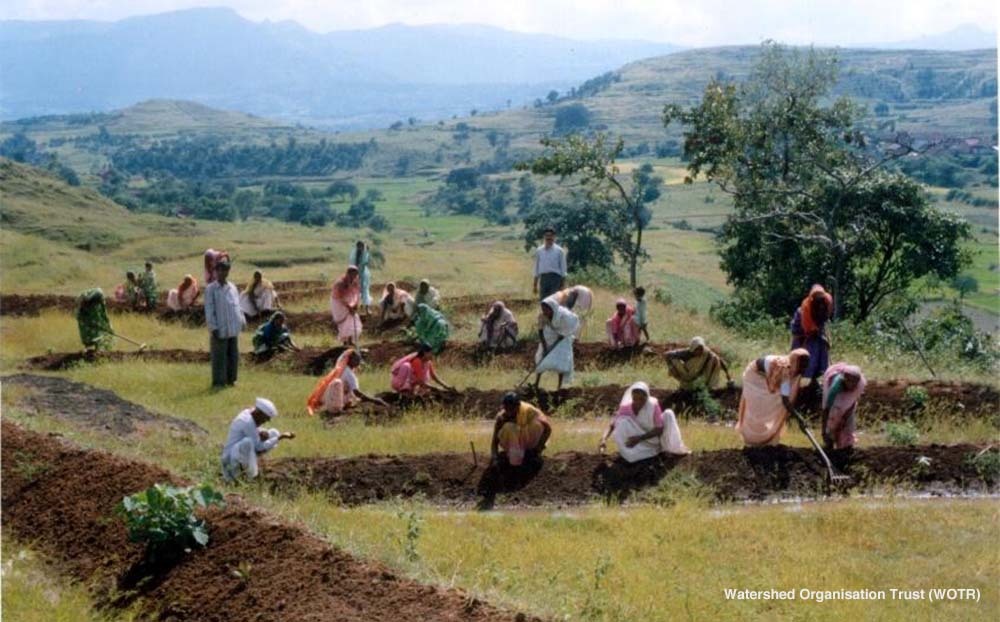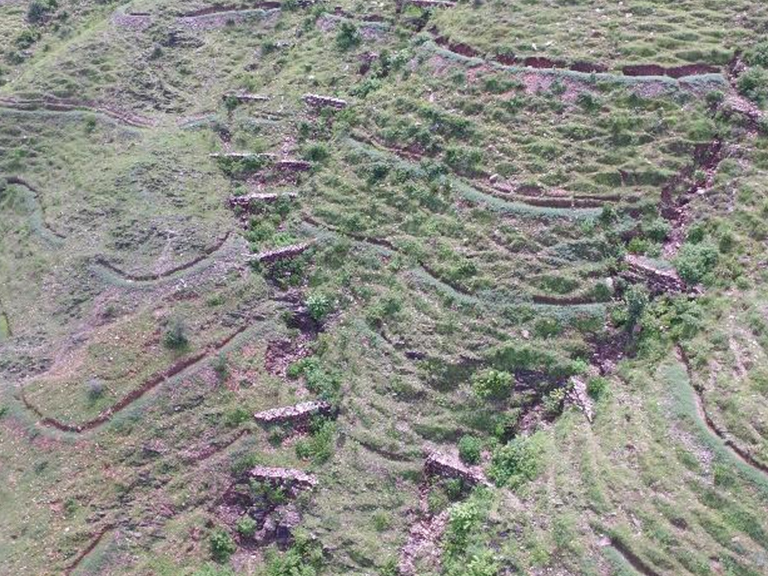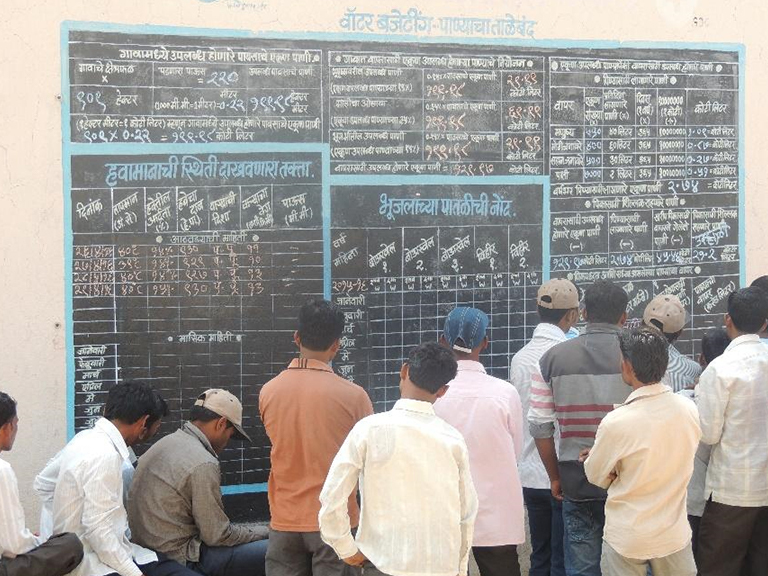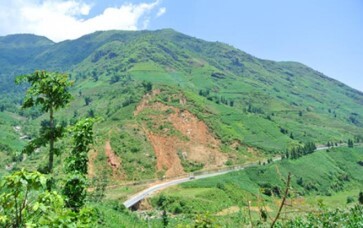
by tschuma417 via iStock
Issue
Uncontrolled anthropogenic pressure on water resources lowers the groundwater table and negatively impacts rural livelihoods and drinking water, especially for the poor
Solution
Water Stewardship empowers communities to adopt a nature based hydrogeological approach in land development and management, to equitably address water scarcity
Depleting groundwater in Maharashtra
India is the world’s highest extractor of groundwater: 75% of irrigation and 90% of rural domestic water needs are met by groundwater. This situation is likely to worsen due to rising global temperatures and the increasing demand for water by humans and nature.
Recent studies show that land degradation has become more widespread in India. In Maharashtra it is caused by sheet erosion aggravated by loss of tree cover and the expansion of cultivation. Frequent droughts and drought-like conditions and the need for income from agriculture drives excessive groundwater exploitation. Farmers who own water resources over-extract groundwater, which adversely affects the flow of streams and the water sources of neighboring households. This situation led the Watershed Organisation Trust (WOTR) to initiate an integrated NbS approach to watershed development at a landscape level. However, this effort is not sustainable unless the local community takes over the stewardship of their natural resource base.

Water Stewardship Initative to tackle groundwater scarcity
Participatory watershed development aligns with nature to regenerate degraded landscapes. It improves soil health and increases carbon sequestration and water availability. Implemented across the landscape, from ridge to valley, this set of NbS includes contour trenches, reforestation, and grass cover protection. As water levels increase, its use is uncontrolled, with some households benefiting over others, causing anthropogenic water scarcity. In order to maintain the regenerated landscape, community management through a ‘Water Stewardship’ approach is essential, without which the degradation process continues.
Water Stewardship is an inclusive approach. The capacitated local community becomes the caretaker of their water resources and is responsible for ensuring water supply meets the demand for domestic needs, livestock, agriculture, livelihoods, and nature. The local committee repairs and maintains watershed structures to ensure rainwater is harvested. They quantify the water available based on the rainfall received and the water column in wells and borewells. Based on the water available, the community prepares the village water use plan for the season. It prioritizes the water requirement for domestic needs, livestock, and nature, after which crop selection plans and water saving measures, such as mulching and micro-irrigation are implemented. Water Stewardship is thus essential to support this NbS for watershed development.
Local community empowerment is a key for success
To sustain the benefits of nature aligned watershed development, a human focused approach is essential, with the local community at the center. It needs to be inclusive, where all socio-economic groups and women are proportionately represented in the committee. Taking the community into confidence from the onset and building their capacity is important for a project’s continuity beyond its official period.
Empowering the community with knowledge and information provides them with a good understanding of the local context and helps them make appropriate decisions. The use of various tools helps the local governing body to understand the typography, hydrology, aquifers, agriculture, and people’s needs, and then helps them to set and apply norms for water use. Demystifying information and technology by a ‘hands-on’ approach capacitates the community and builds ownership. Assessment of the ‘Village Water Health Status’ is important for mobilizing the community to engage in Water Stewardship. Based on this assessment, nature aligned interventions are carried out to re-charge superficial aquifers, and the availability of water guides crop choice, for example, in a year of low rainfall crops requiring less water are cultivated. Also, where possible, local indigenous crops are cultivated for food security.

People discussing the water budget for the village © Watershed Organisation Trust (WOTR)
One crucial point for rural households is the monetary gain from conservation measures. As part of the Water Stewardship initiative the ‘Climate Resilient Agriculture’ package of practices is promoted. It includes enhancing soil health with biomass, applying organic formulations for pest and nutrient management, mulching and micro-irrigation, and accessing location specific crop-weather advisories. Guidance is provided through farmer-field schools and practices are promoted through farmer-to-farmer extension.
Stakeholder engagement that brings together the various actors plays an important role in understanding each ones needs; personal differences are set aside, and the focus is on facilitating conversations about their shared resources and finding a way to achieve sustainable growth.
Following this holistic approach has shown that when a community works together in an inclusive manner incomes can increase and the natural resource base can be sustainably maintained. Water Stewardship is integral to this nature-based approach to sustainable land and water management.
Acknowledgements
The content of this case study was prepared by Marcella D’Souza and Tanmay Pisolkar, Watershed Organization Trust (WOTR), India
Location
Related Information
- Ajit Jadhav, Aradhana Yaduvanshi, Arpan Golechha, Dr. Marcella D’Souza, Nikhil Nikam, Prashant Kalaskar, Sourya Das, Vijay Solanky. Study Report: Economics of Climate Change Adaptation in Ahmednagar District, Maharashtra
- D’Souza, M., Kale, E., Pinjan, H. 2019. A Step towards Quenching Rural India’s Thirst, Experiences and Learnings from the Water Stewardship Initiative in Maharashtra, Watershed Organisation Trust (WOTR), Pune
- Dr. Marcella D’Souza, Sourya Das, Ecosystem restoration of Land Degradation Neutrality – The Economic valuation of land restoration in Eastern Madhya Pradesh and Western Maharashtra




